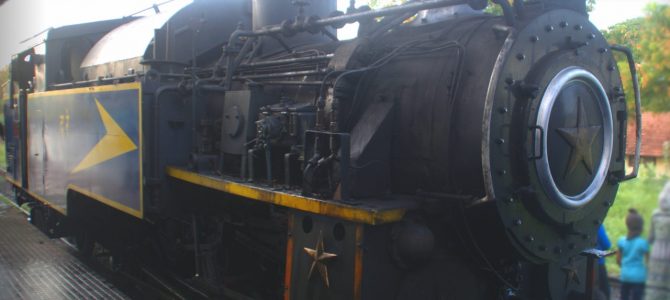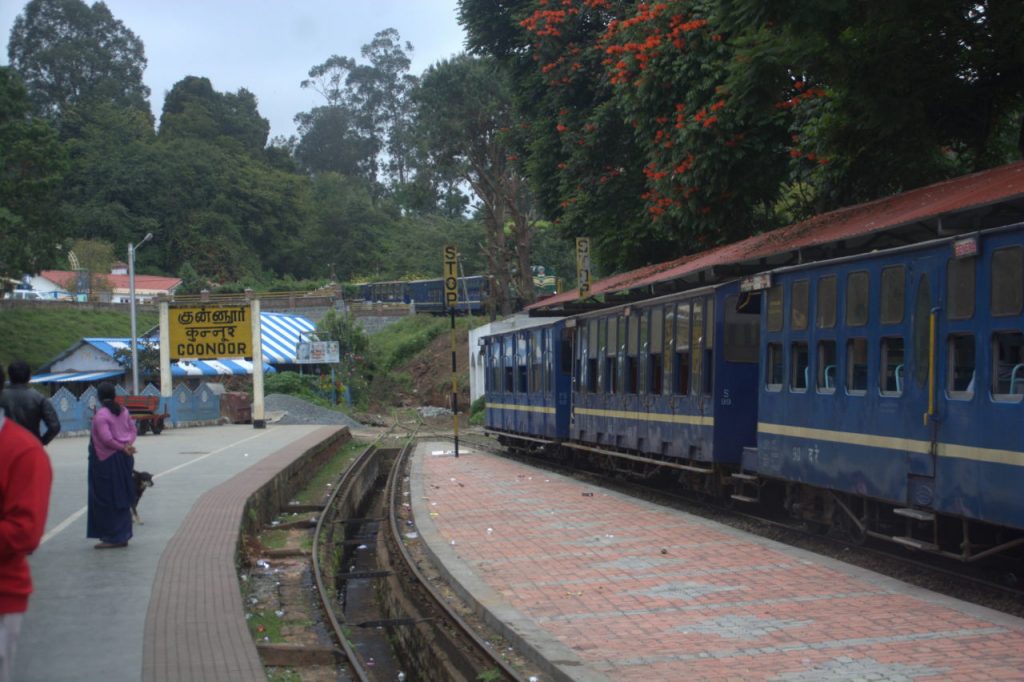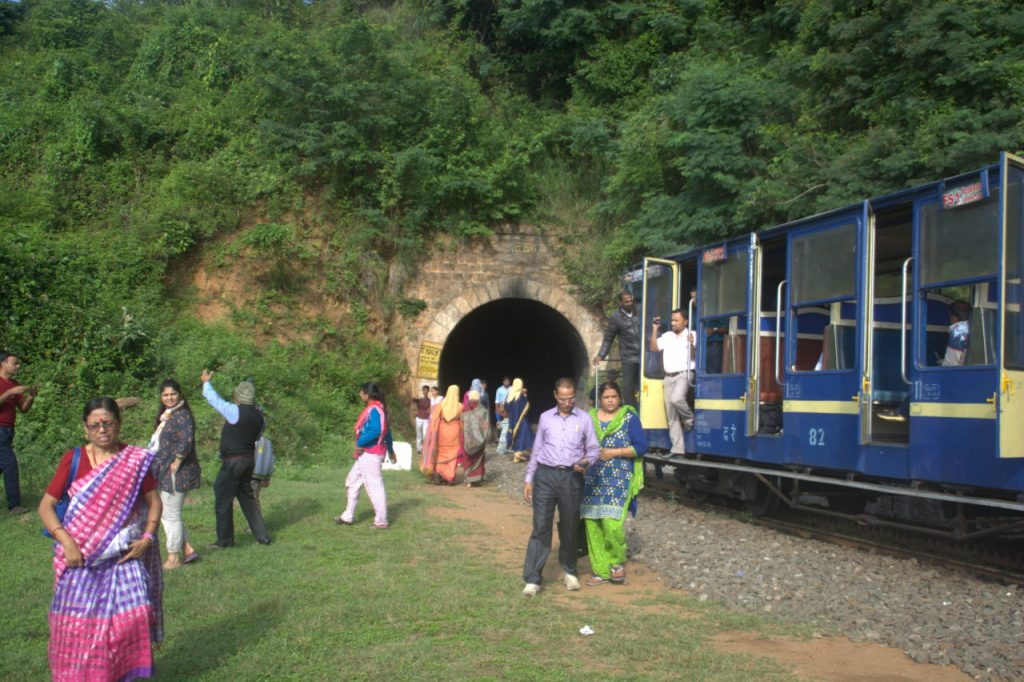Nilgiri Mountain Rail, also known as the ‘Ooty Toy train’, is one of the most exciting ways to explore the beautiful Nilgiri Hills. It is one of the steepest mountain railways in Asia and is steeper than its Himalayan counterparts (e.g. Shimla, Darjeeling). The terrain of Nilgiris is very demanding and it took the British 45 years to complete the Niligiri Mountain Railways. This may not sound like much until you are told that Darjeeling Hill Railway, which was the first Hill railway in India and built before Niligiri, was built in under 3 years.
Unlike the other three famous mountain railways of India (Shimla, Darjeeling and Matheran), which use narrow gauge, Nilgiri Mountain Rail runs on standard metre gauge tracks with adaptation for the mountains. Nilgiri Mountain Rail has rightly been declared as a ‘World heritage site’ by UNESCO in 2005.
A Brief History of the Nilgiri Mountain Railway
In the 18th century when Udhagamandalam or Ootacamund was a favoured hill station for the British posted in Madras, Mysore & Travancore presidencies, access to the town was primarily through horseback or on ‘dollies’ (palanquins) carried by workers. The British commissioned the Swiss Inventor Riggenbach to build a railway line. Work commenced in 1899. The initial route ran up to Coonoor, but was later extended to Fern Hill and further to Ooty in the 1900’s. The locomotives used here have impressive strength and life span. The youngest locomotive of this train is about 50 years old and the oldest is about 80 years and still going strong.
The Train’s Unique Engineering
A unique thing about the Ooty toy train is that it ascends from an altitude of 1069 Feet to 7228 feet, i,e an impressive 6159 feet within just 45 kilometres, making it the steepest rail route in Asia. The excellent engineering capabilities that made this possible is very interesting and unique called Alternate Biting system or ABT, also known as rack and pinion system. It mimics the way a person climbs a ladder.
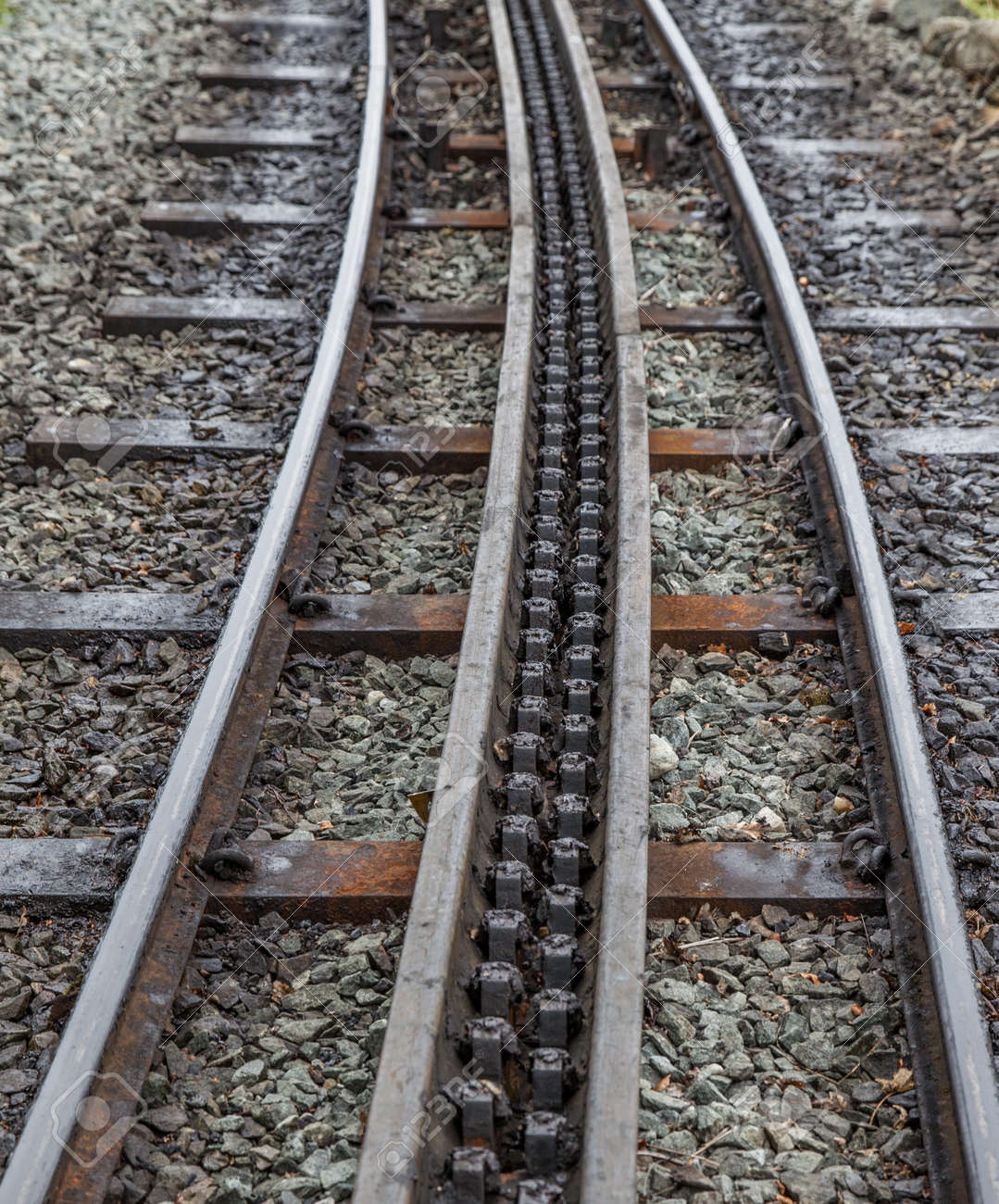
Rack rail between regular rails
Between the metre gauge rails is a pair to two closely placed rails that look like teeth. The teeth on the two rails are not matched, but out of step with each other. The third rail pair is called a rack. On the underside of the train is a wheel with teeth. The teeth on this wheel behave like human feet. They place themselves on the teeth on the rack and use them as the steps of a ladder, thus propelling the train upward. This teeth-bearing wheel is called a pinion. Regular metre gauge rails (without rack rail) run for 4 km from the origin station, Mettuppalayam to the next station Kallar. 200 metres after the train leaves Kallar, the train’s pinions grab onto the rack rail to start a steep ascent.
The train is powered by a steam locomotive between Mettuppalayam and Coonoor. On the way up, the steam locomotive is at the rear of the train to push it from behind. On the way down, the locomotive is on the front of the train, but is attached with its hood facing the train. This means that the downhill-bound train is still being pushed uphill! With the train hurtling down purely due to gravity, the engine regulates the train’s speed by pushing it in the opposite direction to prevent any collision or derailing.
These days, the section between Coonoor and Ooty is powered by diesel locomotives. These locomotives were running on the Southern Railway’s metre gauge route between Chennai and Madurai. But with that route converted to broad gauge, the locomotives were shipped to Nilgiri Mountain Rail. Pinions were added to the underside of the diesel locomotives to use the rack rails.
The Rail Route of the Ooty Toy Train
Important railway stations on the route are:
- Mettuppalayam, where the train starts.
- Coonoor
- Wellington
- Lovedale
- Ooty
There are other stations such as Kallar, where the rack rail begins, Hill Grove, where the train stops for the steam locomotive to refill water to produce steam, Aravankadu and Ketti.
The railway line between Mettupalayam and Ooty is 46 Km long and takes 5 hours. Starting from the foothills at Mettupalayam, on the banks of Bhavani river, the train passes through the plains for 4 kilometres. In the next 12 km stretch, it quickly climbs an impressive 4363 feet, and passes through nine tunnels. The entire stretch between Kallar and Ooty contains 16 tunnels with different curvatures and lengths, all in excellent condition. The stretch also has 250 bridges large and small. It is a delight to cruise through this picturesque route in a cute little toy train, which travels at a maximum permissible speed of 13 kmph over the 42 km rack rail section and at a maximum of 30 kmph on the 4 km section with no rack.
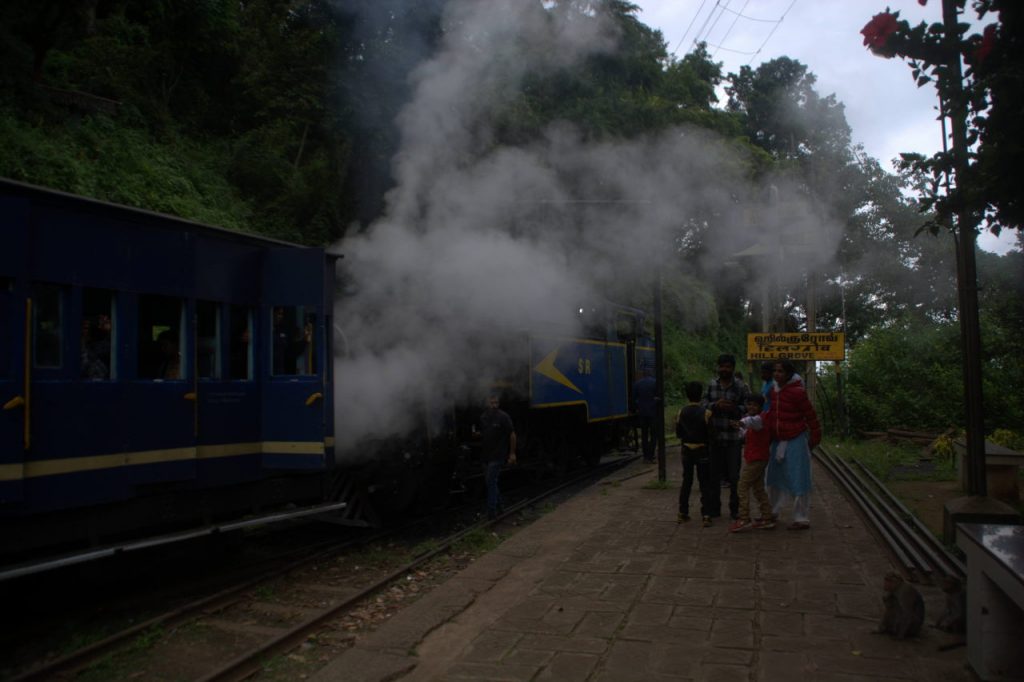
The steam locomotive of the Nilgiri Mountain train hisses out plenty of steam at Hill Grove railway station as it prepares to leave.
Though there is no scheduled downtime for monsoon unlike the Matheran Hill Railway in Maharashtra, the Nilgiri mountains receive very heavy rainfall from both the south-west and northeast monsoon winds. The train service is often temporarily suspended due to landslide or related hazards.
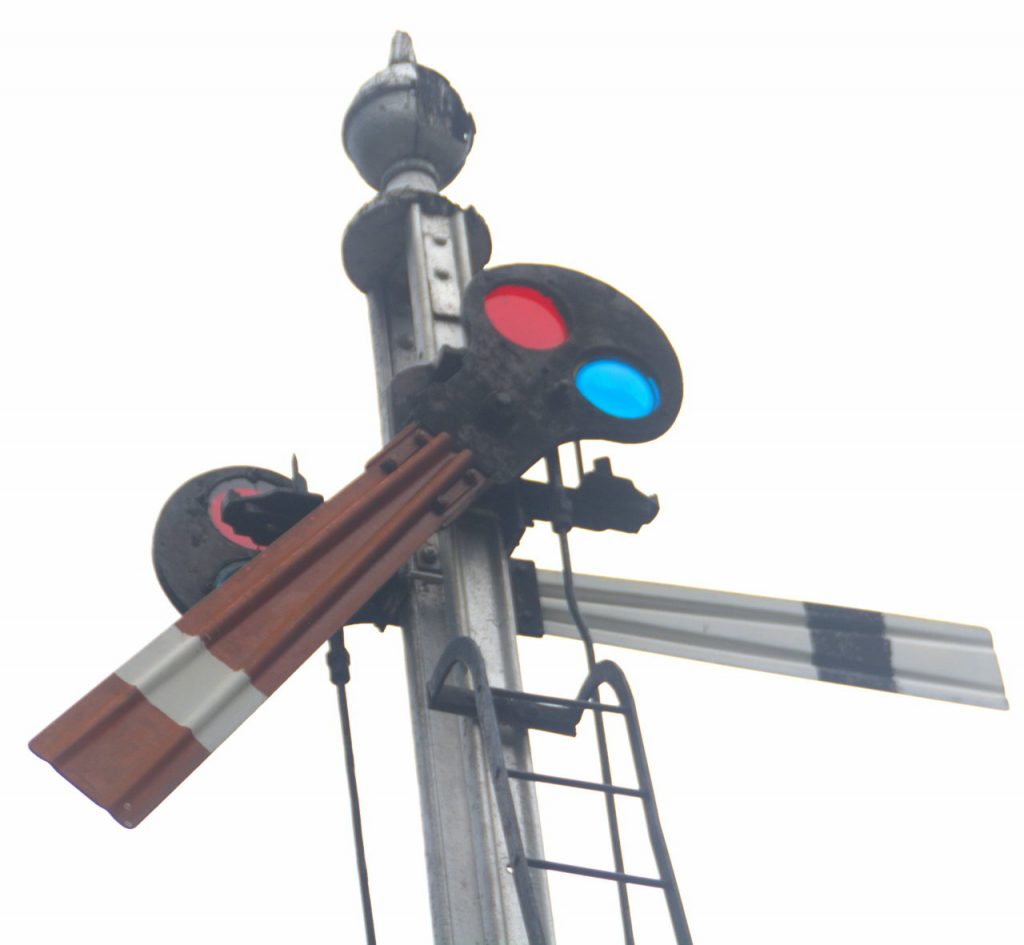
A heritage semaphore signal on the Nilgiri Mountain route. An arm parallel to the ground is the equivalent of a red ‘stop’ signal and the arm drooping down towards the ground is the equivalent of the green ‘go’ signal. At night, the arms are nearly invisible. The red and blue film glow in the dark. The radiant films are vertically lined up when the arm is parallel to the ground, and appear diagonal when the arm is down.
Traveller Tips
- Grab the left side of the coach on the way up and right side on the way down to get more views of the valley. On the other side you will mostly see mountain walls adjacent to the train.
- The best views can be seen from the early morning and early evening trains with several photo opportunities.
- Mettupalayam – Coonor section doesn’t just have the best views. This part of the journey is powered by the Swiss-made X Class steam locomotive, which is one of the oldest steam locomotives still running.
- Only one of the coaches is available for reservation in advance, e.g. through a website like IRCTC. The tickets for the other coaches must be bought at the station where you board. The tickets are sold on a first-come-first-serve basis. To get the tickets at the station, please be available at least 30 minutes to an hour before the departure of the train.
- Ooty railway station is officially called Udhagamandalam, the city’s Tamil name. The British habitually failed to learn the correct pronunciation of Indian places. They pronounced and spelt the name as Ootacamund. It was shortened to Ooty and the name stuck. You will also see the shortened Tamil name Udhagai on shop boards and Tamil Nadu state transport buses.
Full Video
Here is a full video of our ride in the Nilgiri Mountain Rail toy train from Mettuppalayam to Coonoor.
Conclusion
Railways are a wonderful way to explore India, but mountain railways like the one in Nilgiri are especially spectacular. Along with enabling the tribes of India to access the facilities in the cities of the plains, they are an engineering marvel, a work of beauty and a tribute to the wonder that India is.

